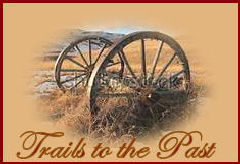The
History of Red Wing
History of Goodhue County
Franklyn,
Curtiss, Wedge
1910
W. B. Hancock,
who arrived in Red Wing in October 1853, thus describes the
city at that time, after speaking of the rather starting
appearance of the Indians : The whole town-site was covered
with bushes some ten or twelve feet high. The hotel on the
corner of Main and Bush streets was nearly finished and
occupied by Mr. Durand. William Freeborn had a fairly large
frame house. H. L. Bevans had some goods in a board shanty on
Main street. Warren Hunt had a small house. That is all the
buildings on Main street that I can think of. William Lauver,
Squire Akers, and a man by the name of Smith, had small frame
houses on the other side of Jordan, as it was then called.
John Day lived on his claim all the time. I do not think the
city extended that far. His shanty stood on the bank of the
bay where the Red Wing Stoneware Company now has its works.
Rev. Sorin had a frame house. Calvin Potter had a hewed log
house with a store in the same building. The same was
afterward used, with a new front built on, for a hotel called
the Metropolitan, burned many years ago. There were some
mission houses, which stood on Bush street (what would now be
about the middle of the street, a little to the south of
mid-way between Main and Third streets). H. L. Bevans lived in
one, J. W. Hancock, the other. The latter was two stories and
double, one end being used as a school and meeting house. Dr.
W. W. Sweney lived in a log house near the river bank. A man
by the name of Hoyt had a log house somewhat further back. Mr.
Chilson, who afterward built the Chilson House, was here. Jim
McGuires moved into the school house and lived in it that
winter. The family of Rezin Spates lived out on Spring creek.
The house stood where the poor farm now is. These are all the
married families I can recollect, but there were several
bachelors' establishments in and around Red Wing at that
time."
Some farming was
done this year. Wheat, oats, corn, potatoes and rutabagas were
grown within the limits of the present city. Probably the
first wheat raised in Minnesota south of the Minnesota river
was raised here at that time. A notable event was the first
Christmas dinner (1853), when the town proprietor, William
Freeborn, invited the entire population to a Christmas dinner
at his home. With one or two exceptions, all accepted, making
an event at which practically the entire population of Red
Wing was present.
An incident of
this year is related as follows : A number of Indian families
were encamped in the vicinity of Red Wing, a few miles up the
river, on the Minnesota side. A man named Hawley had a shanty
on the Wisconsin side, just above the site of the present
village of Trenton. Some trouble occurred between Hawley and
Ta-sha-ta (Deer Hoof), in which the Indian received a fatal
stab with a knife. Word was brought to the few settlers at Red
Wing that Hawley had killed an Indian and the settlers were
seriously alarmed, for it had been the boast of Red Wing's
people that none of that band had ever killed a White man, and
it was naturally expected that they might now seek retaliation
in vengeance on the whites. Some of the settlers went up to
the Indian encampment and assured the Indians that Hawley
should be punished as he deserved, and they were satisfied,
manifesting no desire to wreak vengeance on the innocent
settlers. Hawley fled from his shanty and was never afterwards
seen in the country. A report subsequently came back that he
had been shot and killed by an Iowa
sheriff.
The little
community at Red Wing spent the winter of 1853 in peace and
safety. Religious services were held each afternoon Sabbath in
the school room of the old Mission house. Hiram Middaugh was
leader of the choir and also teacher of singing. Debates and social
parties were held occasionally. As soon as the ice on the
river became strong enough to bear up teams, trwelers began to
pass up and down the river, frequently tarrying for the night
in this little village. In the fall of this year, Dr. W. W.
Sweney was appointed postmaster. The spring of 1854
opened early. That year the steamer D. Hillman passed through
the lake, April 5, 1854, on its way to St. Paul. Early this
spring came a number of new
settlers.
Hon. W. H.
Welch, then chief justice of the territory of Minnesota,
visited the place and decided to make his home here. Among others who came
to stay were W. W. DeKay, P. Sandford, W. H. Wellington, C. J.
F. Smith, William Colvill, Jr., P. S. Fish and S. J. Hasler.
A large number of private houses were erected. The American
House (at first Mrs. Allen's hoarding house) was opened, and
J. C. Weatherby's dry goods and grocery store, E. P. Lowater's
shoe store and Hoyt & Smith's warehouse all commenced
business. Wheat raised this year was found to be of a most
superior quality, and the marketing and shipping of this
cereal gwe Red Wing its first start as a business point. A few years after, and
before any railroads had found their way into this territory,
Red Wing was claimed to be the greatest primary wheat market
in the world.
Red Wing this
year was made the county seat of the new county of Goodhue. A
full complement of county officers were appointed by the
territorial governor, nearly all being citizens of Red Wing.
The burdens of office, however, were, easily borne. Philander Sanford, the
first lawyer in Red Wing, built an office on Main street,
where practically all the public business of the county was
transacted.
One thing that
gwe the place some reputation abroad at the early beginning
was the probability that it would soon be the seat of an
institution of learning of a high order. It was known that the
Methodist Episcopal church was about to establish a university
somewhere in the northwest and that Red Wing had been selected
as the proper place for it. The hopes of the people in regard
to such an enterprise began to be realized toward the end of
the year 1854, when Prof. Jabez Brooks, on November 16, opened
a school in the hall over Smith, Hoyt & Co.'s store. This
school was called the preparatory department of Hamline
University.
The prevalence
of cholera on the river during the summer of this year had
retarded the growth of the town somewhat. Persons were
frequently landed here from boats who were infected with the
disease, and, though cared for as tenderly and patiently as
possible, many of them died. It was remarkable that the
pestilence did not spread among the residents.
The Indians had been
formally removed by the government in the fall of 1853, to
their reservations, but many stragglers came back again and
encamped near the place during the following season.
Considering that this was the home as well as the burial place
of their ancestors, this is not surprising. No danger was
apprehended by those acquainted with the ways of the Reds, but
some of the new comers had their fears. It would hwe been very
easy for the Indians to hwe taken the place by surprise and
murdered all the inhabitants in a single night had they been
so disposed. The distance between Red Wing and their new home
was not great. Very few white settlements then intervened. The
Indians were fully acquainted with the country, but greatly
dissatisfied with the change that they had been compelled to
make. But their patience was not quite exhausted and the
settlers were not molested. One man was badly scared,
however. Awakened
suddenly in the night by a hideous noise, he thought the
Indians had certainly come and that the work of death was
going on at his neighbors' houses. Believing that all was
lost, he resolved nevertheless to sell his life as dearly as
possible. Snatching his revolver, which was ready loaded, he
bounded into the street in his night dress, and, rushing to a
clump of bushes which stood between his house and the others,
he awaited the attack, hoping to kill at least three or four
Indians before they should kill him. An interval occurred in
the noise, revealing the sound of familiar voices among those
who were imitating the swage war whoop, and he was convinced
of his mistake. It was only a party of boys paying their
respects to a newly married couple.
The information
on Trails to the Past © Copyright may be used in personal family history research, with source citation. The pages in entirety may not be duplicated for publication in any fashion without the permission of the owner. Commercial use of any material on this site is not permitted. Please respect the wishes of those who have contributed their time and efforts to make this free site possible.~Thank you!


